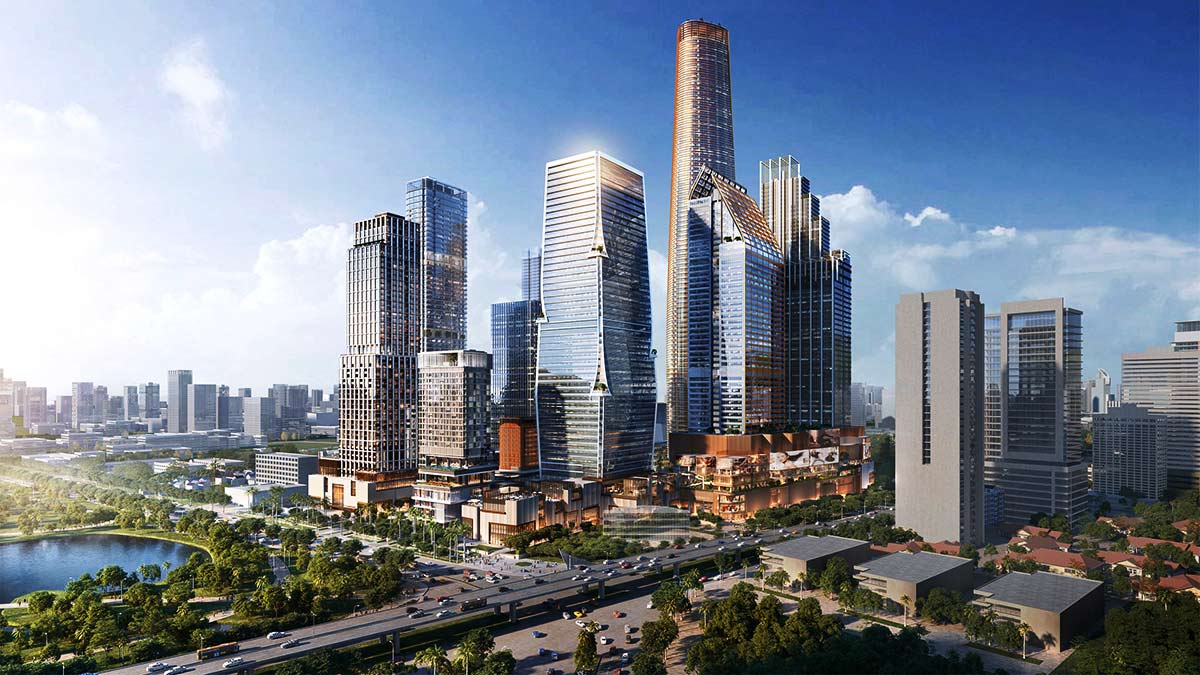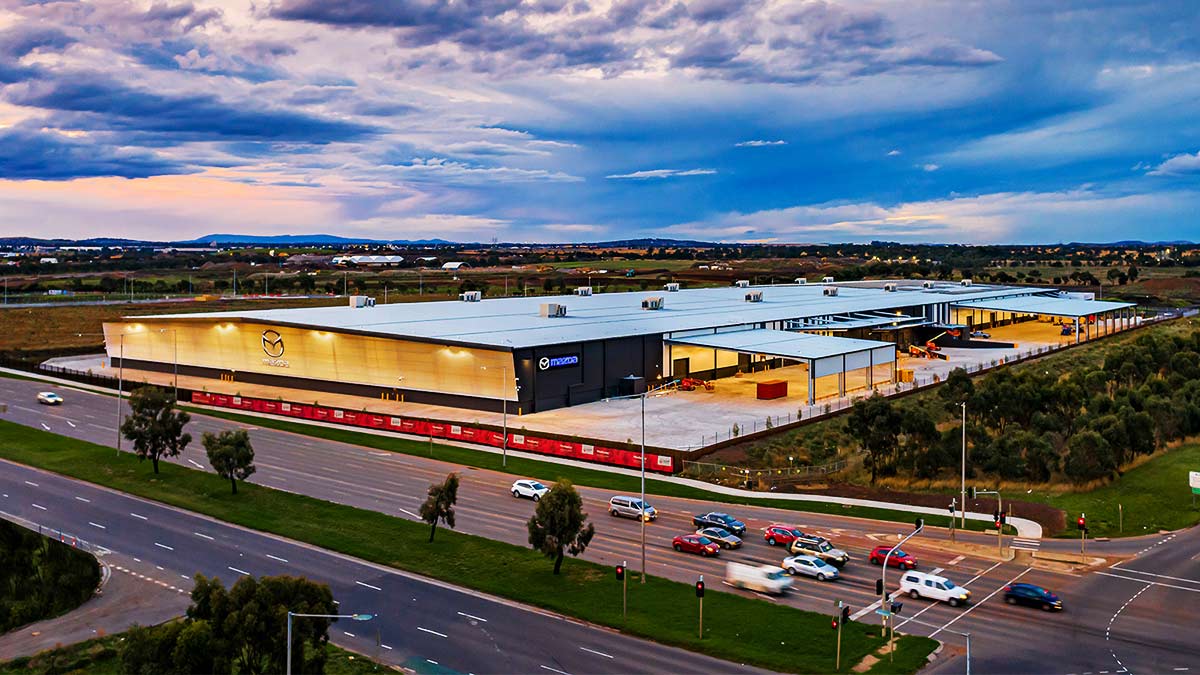Real Estate’s Race To Net Zero Carbon
Strategically located in the heart of Singapore’s Central Business District, Frasers Tower is Frasers Property’s Grade A office development that offers a smart and sustainable working environment. Its environmentally-friendly features include energy-efficient and regenerative high-speed lifts, a high-performance double-glazed façade, as well as lush greenery at its community zones.
Cities are very much on the front line of the fight against climate change, with around 40% of global greenhouse gas emissions coming from our buildings.[1]
And with almost three quarters of the world’s population set to live in urbanized areas by 2050[2] – compared with 50% now – the need for smarter, zero-carbon cities has never been more urgent. Decarbonizing new and existing buildings by making them more energy efficient will ultimately reduce costs, make buildings more comfortable for occupants, and have a positive environmental impact.
Key to this decarbonization process will be the maximization of building fabric design for high-sustainability performance, the transition to highly energy efficient equipment and renewable sources of energy, together with the introduction of innovative green technologies – from distributed energy systems to smart meters – that allow households and businesses to produce, save and trade their own energy.
“We believe that adopting a partnership-based approach will drive positive change, strengthen our supply chain and the businesses within it, which will be key to the success of our net-zero carbon goal.”
— Chia Khong Shoong, Group Chief Corporate Officer at Frasers Property
Thousands of cities, businesses and investors are already making net-zero carbon commitments in line with the 2015 Paris Agreement on climate change.[3] For the real estate sector, this means reducing emissions resulting from the development, ownership and management of its assets.
“We’re conscious that the built environment accounts for a significant percentage of global carbon emissions. This gives us an opportunity to leverage our real estate developer position to reduce emissions across the value chain and influence other stakeholders to act as well,” said Chia Khong Shoong, Group Chief Corporate Officer at Frasers Property, a multinational real estate company listed and headquartered in Singapore.
Frasers Property is tackling decarbonization as part of its journey to be a purpose-driven organization. In addition to its focus on a sustainable environment, Frasers Property aims to have a lasting impact on people and communities, and build a more inclusive and resilient society.
Decarbonization Pledge
With a global portfolio spanning residential, retail, commercial, business parks, hospitality, and industrial and logistics, Frasers Property has committed to five sustainability goals:[4] to be net-zero carbon by 2050; to be climate resilient and establish adaptation and mitigation plans by 2024; to green-certify 80% of its owned and asset-managed properties by 2024; to finance the majority of its sustainable asset portfolios with green and sustainable financing by 2024; and to train all its employees on sustainability.
Getting there will require the company to go further than most to track and reduce emissions. Frasers Property will target sources it is responsible for directly (known as Scope 1 emissions), as well as indirectly through its energy usage (Scope 2 emissions), and along its value chain with Scope 3 emissions from tenants, contractors and suppliers.
To address Scope 1 and 2 emissions, Frasers Property is focused on the transition to renewable energy sources for electrifying, heating and cooling buildings, the introduction of more energy-efficient assets such as LED lighting, and the adoption of smarter building management systems.
For example, the use of air conditioners and fans to keep cool accounts for almost 20% of total electricity used in buildings globally.[5] With this in mind, Frasers Property has introduced a number of innovative solutions, such as greenfield and brownfield district cooling systems, that will yield significant energy savings and may reduce its carbon footprint by up to 30%.

One Bangkok is a new greenfield development that spans an entire district of Thailand’s capital and comprises a mix of residential, retail, commercial and cultural uses.[6] Built into the design’s masterplan is the country’s first district cooling and power-distribution system. While the cooling towers use recycled water, the electric chilling system cools and stores water to be used as air conditioning across the 16.7-hectare development, reducing the need for external electricity.
Also, Frasers Tower,[7] a prime office development in Singapore’s Central Business District, was accorded the Green Mark Platinum Award by the country’s Building and Construction Authority for its sustainable design features and the use of lower-carbon and recycled building materials where possible. The building is equipped with a regenerative lift system, while motion-sensor lighting in restrooms, staircases and car-parking areas helps to maximize energy savings.
Elsewhere in Singapore, two of Frasers Property’s malls – Tampines 1 and Century Square[8] – operate energy-efficient chillers and have been selected as key injection nodes for the city’s first brownfield District Cooling Network, in partnership with the government, Temasek and SP Group. Centralized cooling plants circulate chilled water through the buildings via an underground network of insulated pipes to provide air conditioning. The network can also provide cooling capacity to adjacent buildings in the area.
And in London, another development by Frasers Property combines sustainability with smart technology. The Rowe, a 12-floor office complex scheduled to open this year, will run on 100% renewable electricity and will provide a 45% carbon-emission reduction compared with standard office buildings.[9]
Value Chain Emissions
However, tackling emissions produced up and downstream in the value chain is far more challenging, but no less important, given that they can account for more than 70% of an organization’s carbon footprint.[10]
One of the biggest issues is effective tracking. With some partners reluctant or unable to share information, a company will not have the same access to data for Scope 3 emissions as it would for Scopes 1 and 2.
Frasers Property has put in place a group-wide Responsible Sourcing Policy to influence and engage with suppliers when it comes to their sustainability practices.[11]
“We believe that adopting a partnership-based approach will drive positive change, strengthen our supply chain and the businesses within it, which will be key to the success of our net-zero carbon goal,” said Chia.

An innovative partnership with Mazda around local power generation at an industrial facility owned by Frasers Property that the Japanese automaker uses as a parts distribution hub, resulted in it being powered 100% by carbon neutral energy. A 900kW solar energy system able to generate and store electricity on site was installed on the roof of the 37,235 square-meter complex in Melbourne, Australia by Real Utilities, an energy retailer Frasers Property established in 2017 to help drive its sustainability and carbon goals.
“We saw Scope 3 emissions being a big part of our carbon footprint and something we needed to address for our own business as well as our customers,” said Paolo Bevilacqua, General Manager at Real Utilities. “Real Utilities manages the solar energy system and then sells the electricity to Mazda for the price it would pay for ‘brown energy’ supplied by a grid still largely dependent on fossil fuels.”
Frasers Property also recently launched a purpose-led campaign to highlight its efforts to drive sustainable innovation across its businesses, and to rally support among corporates and communities to take firm action on decarbonization.
Green Financing
Decarbonization is creating other benefits that add value across the real estate sector.
One area is sustainable financing, which includes green loans, bonds and other financial products linked to performance on key sustainability metrics.
“We believe that decarbonization can influence our return on investment, while meeting growing client demand and stricter regulations on ESG (Environmental, Social and Governance),” said Chia. “We invest responsibly through two overarching approaches: integrating ESG aspects when investing in and financing new properties and development projects; and improving our existing asset portfolio’s ESG practices and performance.
“To date, we have secured more than S$8 billion ($6 billion) in green and sustainable financing,[12] with our net borrowings linked to our ongoing social and environmental performance.”
The race to net-zero carbon is a potential game-changer for a sector that was initially slow to react to the climate emergency. Sustainability is at the heart of developments and construction and consumers are demanding action on emissions and other pollution. The developers who are able to respond with innovative, efficient and cost-effective solutions will not only future-proof their businesses, they will become standard-bearers in the fight against climate change.
